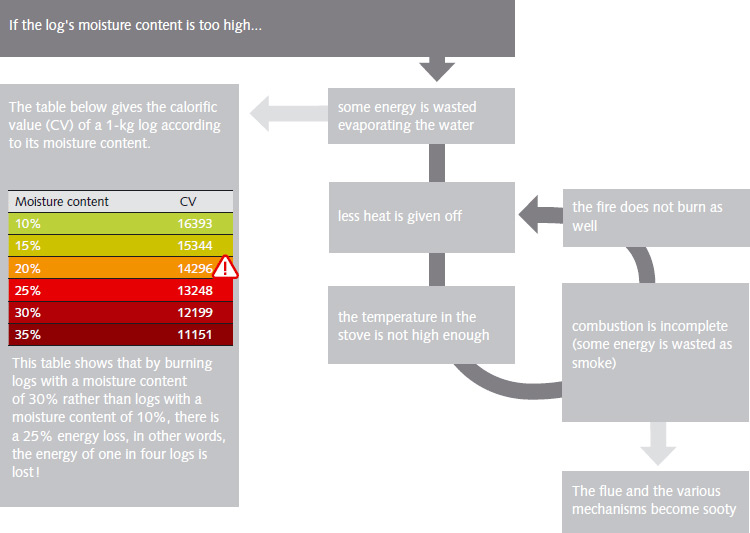Different types of wood have different heat capacities and do not burn in the same way. Generally speaking, you should choose hard wood such as oak, beech, ash, birch, hornbeam or fruit trees. They produce lovely flames and lots of embers, which glow for a long time.
Drying —- Whatever wood you choose, it should be really dry. Damp wood provides a great deal less heat and a large amount of the energy is used just to evaporate the water it contains. Sapwood – as the soft wood just beneath the bark is called – can contain up to 75 % water. Moist wood also releases a lot of smoke, produces few flames and causes the stove, its glass door and the chimney to get dirty and soot up. Big logs should be chopped up to dry better. Wood should be covered or sheltered from the rain but well ventilated. Generally speaking, you should allow two years for the wood to dry properly. You will soon learn to estimate the dryness of the logs by holding them in your hand. The drier they are, the lighter they will feel and they will produce a clearer sound when you knock them together.
To avoid
Conifers : They produce a lot of heat but burn quickly ; they spit embers and the resins they contain dirty the chimney.
Wood that has been treated chemically, railway sleepers, and chipboard, which soon make appliances and chimneys dirty and can give off toxic fumes.
Wet wood is a big no no. Why?
Source: Stuv
